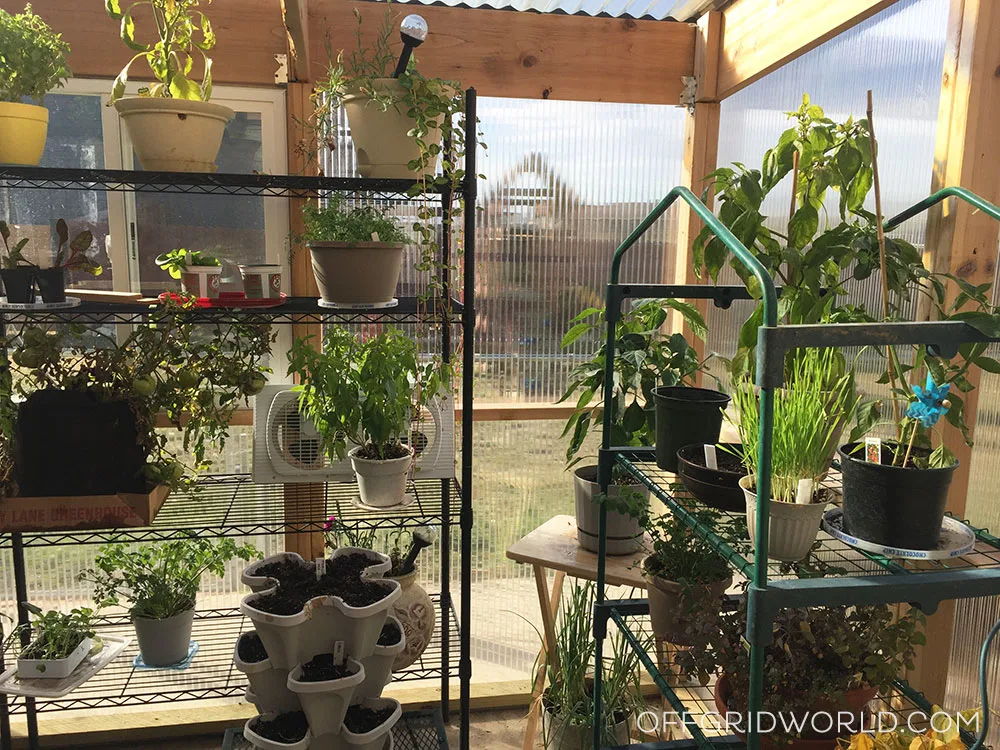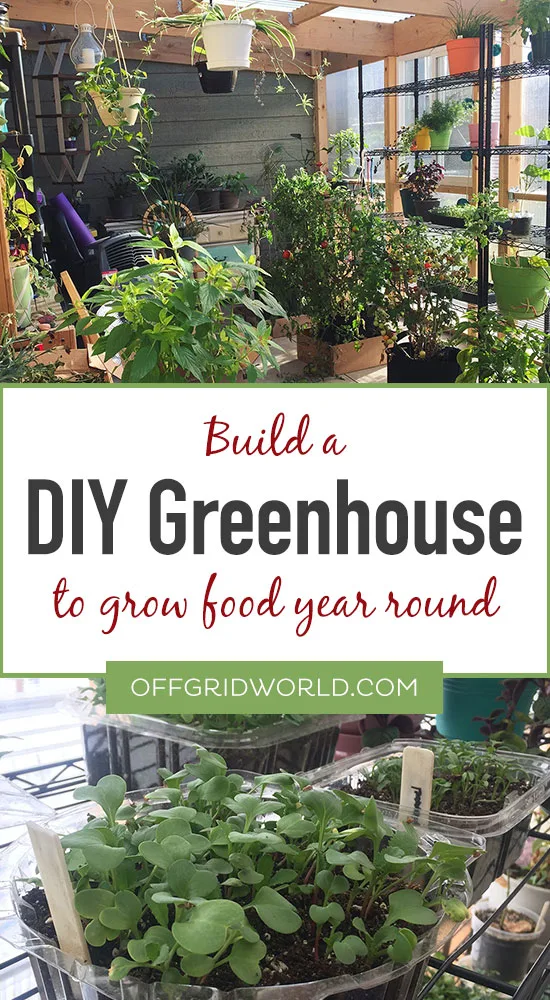I have wanted a greenhouse for as long as I can remember. A warm, well-lit room dedicated to nothing but plants is pretty much every gardener’s dream! Whether for growing food or for housing tropical plants, greenhouses are beautiful and functional additions to a property. Last summer, we put up our own DIY greenhouse – an 11-foot by 20-foot lean-to with polycarbonate panel walls.

Our building process and costs will be the topic of an upcoming article, but first, let’s talk about why every avid gardener should have a greenhouse, and why building a lean-to greenhouse is a budget-friendly option with many benefits.
If you’re on the fence at all about buying or building a greenhouse, perhaps I can help talk you into it!
Why build a greenhouse?
Most gardeners understand the value of a greenhouse, especially when it comes to gardening in cold climates. They’re beautiful and useful in many ways, but the most important is that a greenhouse adds valuable time to the growing season. If you want to grow as much of your own food as possible, like I do, it’s very important to find ways to maximize your growing season.
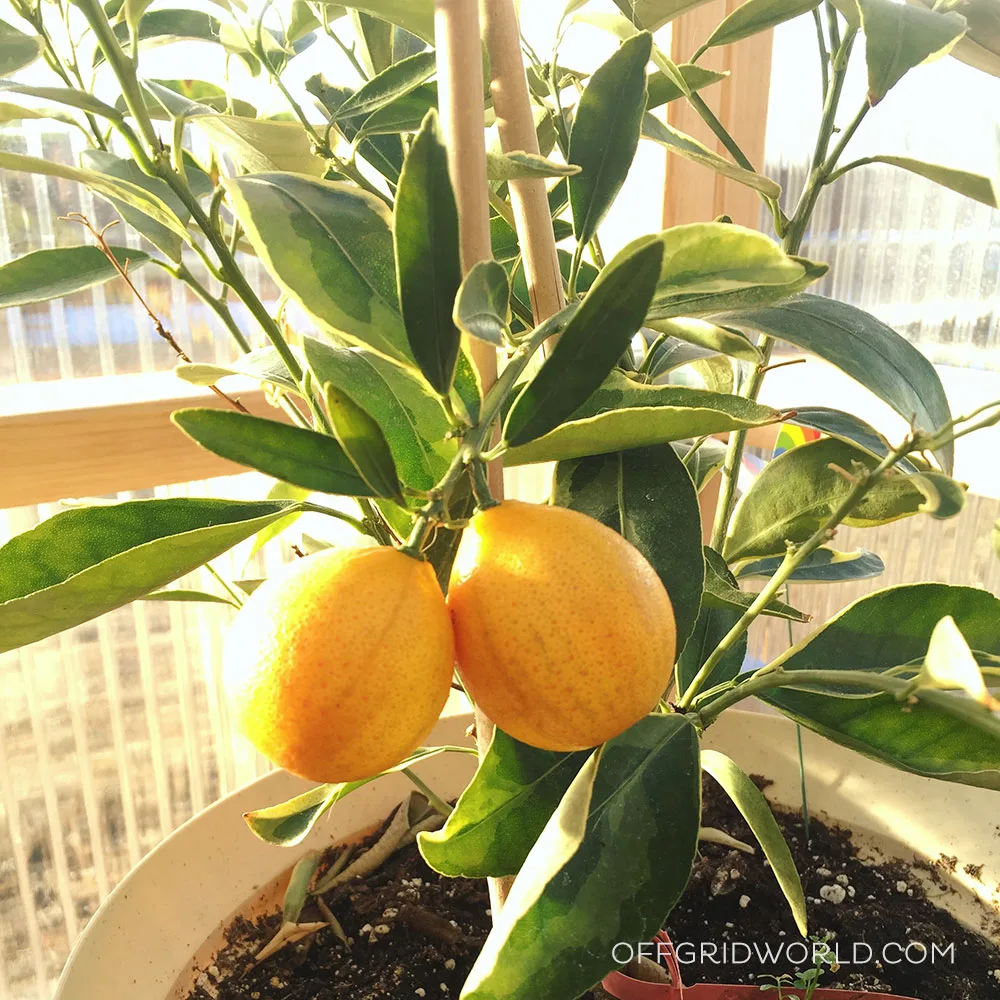
Kumquats in South Dakota? In winter? Yes!
We live in zone 4, so our growing season is very short. If we plant anything too early – before May 15th or so – we run the risk of having new garden plants killed off by a late frost or freak snow storm.
On the other hand, if we plant too late – after the first couple weeks of June – we have a garden full of not-quite-ripe produce threatened by the first fall frost. There’s nothing more frustrating than seeing the fruits of your labor in the garden killed off by frost before getting the chance to mature.
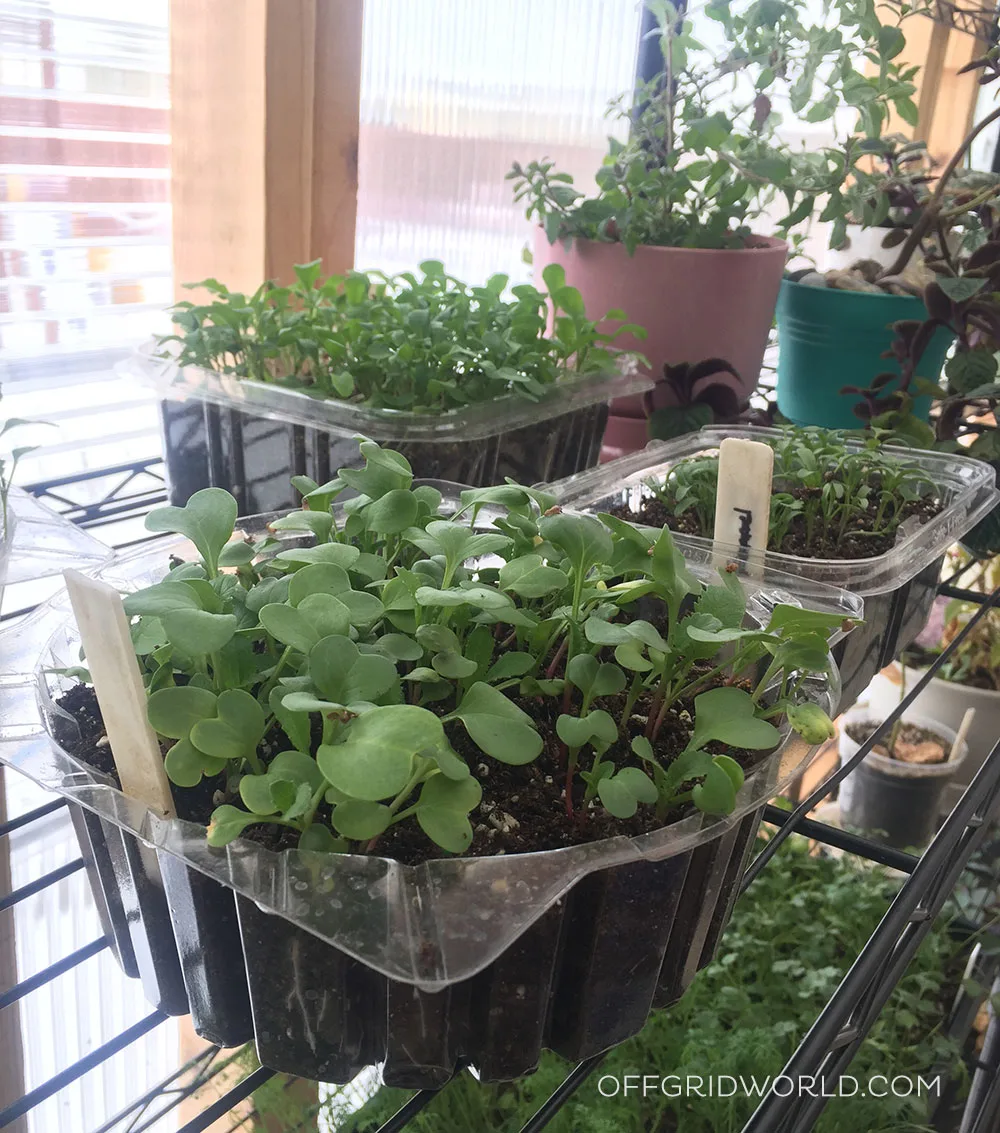
A greenhouse provides a place to start seeds early, so seedlings have a good head start when the soil is warm enough to plant. It also extends the growing season well into fall or even winter. Any plants in containers can be brought into the greenhouse to continue providing harvests long after the first frost.
We were hit with an early frost this past fall. I had several of my tomato plants and peppers in grow bags in the garden so I was able to move them into the greenhouse when that cold weather hit. Amazingly, those plants were still producing well into December – a full 3 months longer than they would have if I left them outdoors!
And, now that we’ve gone through our first winter with the greenhouse, I’ve discovered plants that have thrived all winter, despite the fact that this was the coldest winter on record here. Subzero temperatures were the norm for the last couple months.
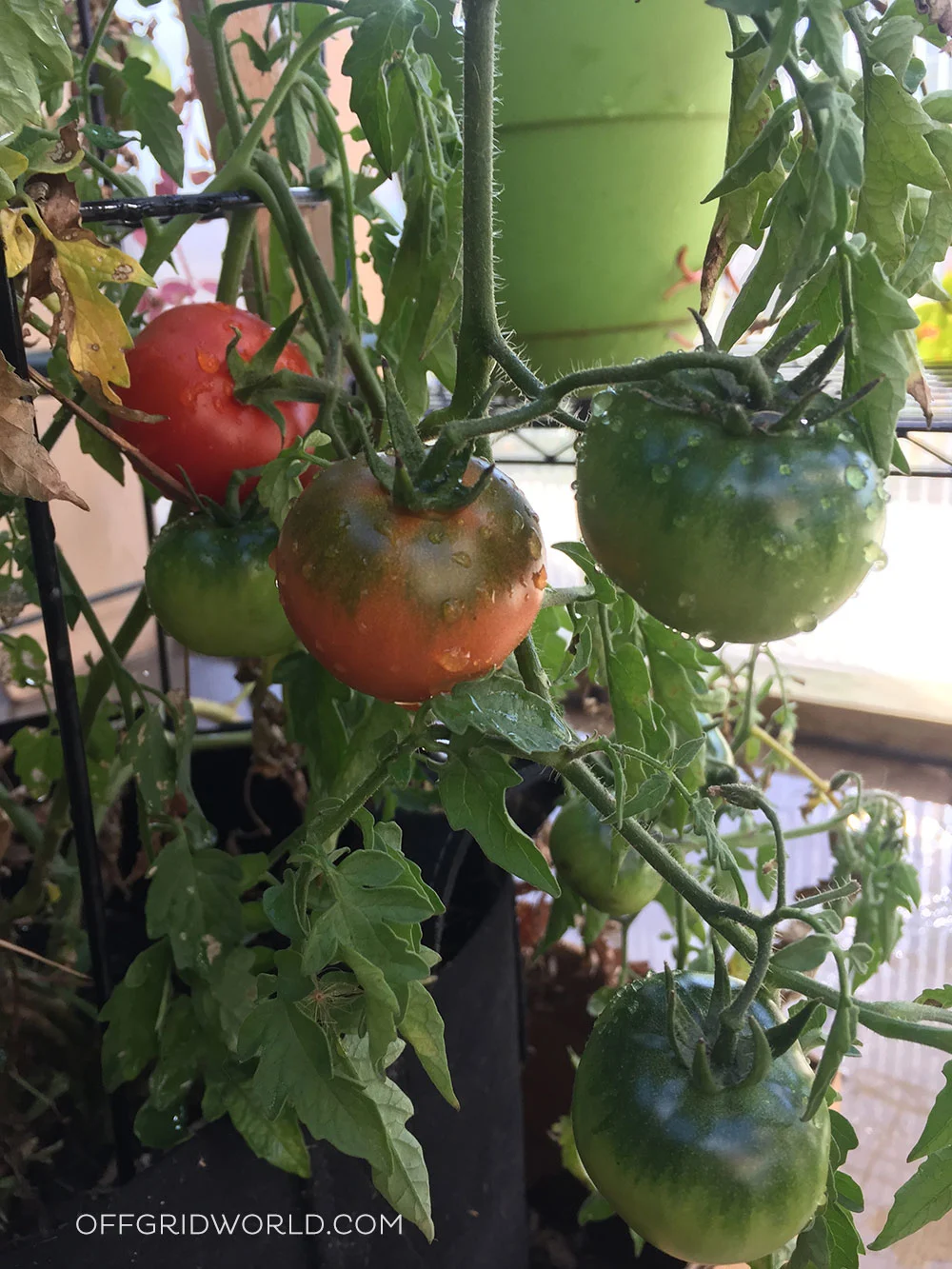
Greenhouse tomatoes still producing in December
Advantages of a DIY lean-to greenhouse
There are endless options when it comes to types of greenhouses: freestanding, attached, hoop houses, geodesic domes, plastic, polycarbonate, glass, and the list goes on. We chose to build a lean-to greenhouse attached to our house, with a sturdy wood frame and triple wall polycarbonate panels.
We opted for the lean-to for a couple reasons. First, we already had a large, unused concrete pad off the back of our garage perfect for a shed or similar structure. We also had a bad water drainage problem in this area, so a lean-to structure made sense to help drain water away from the house.
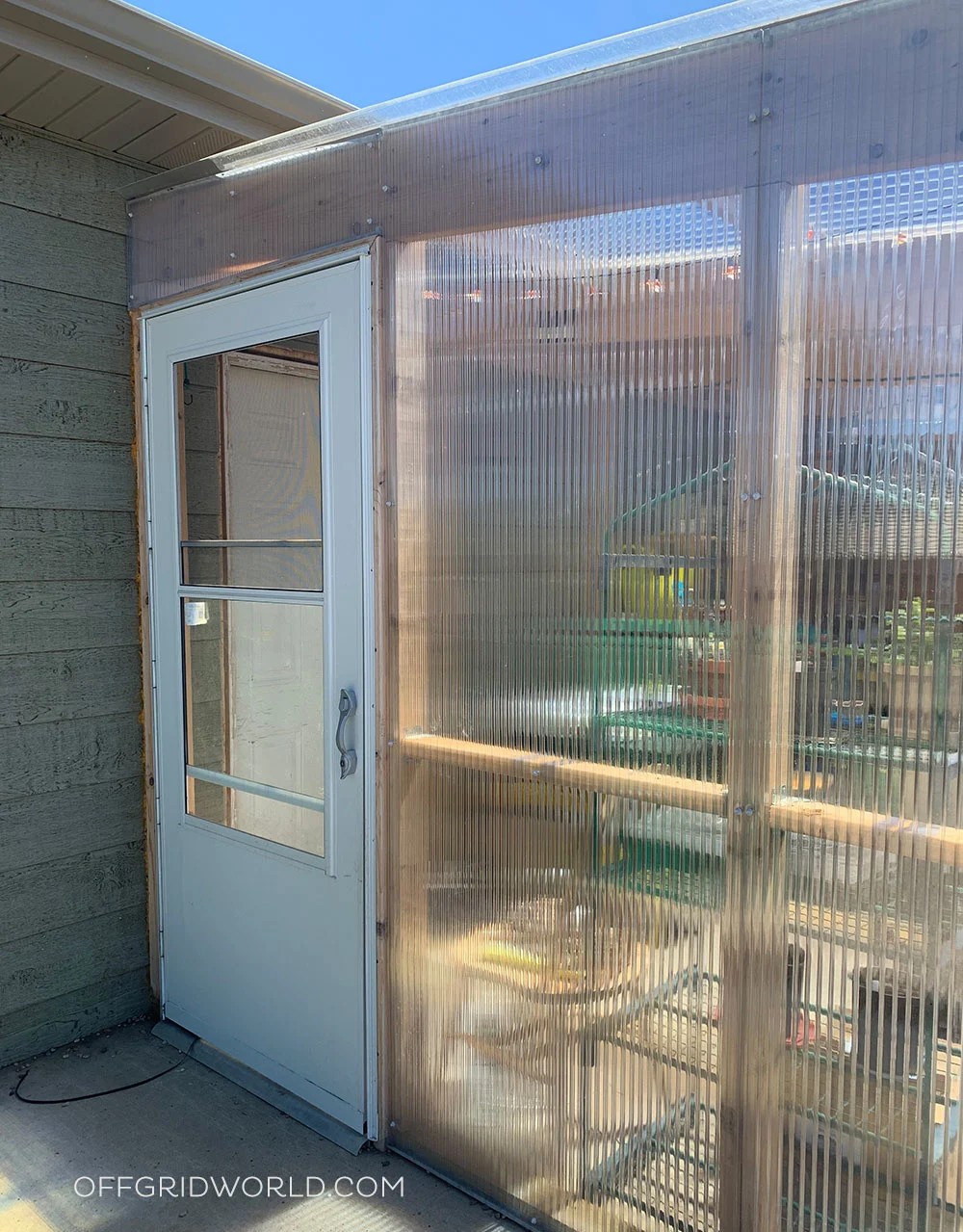
Besides our reasons to build this style, there are many advantages associated with lean-to greenhouses. Here are a few of them.
Advantages of lean-to greenhouses:
-
Cost and simplicity to build
Lean-to greenhouses are a simple design that is easy for most DIYers to tackle. They typically consist of a short wall in the front, a tall wall in the back against a standing structure, and two sides.
Because a lean-to greenhouse is built against an existing structure, fewer materials are typically required to construct one. Most lean-to greenhouses need only the sides and front wall built since the back wall consists of whatever building it is leaning against.
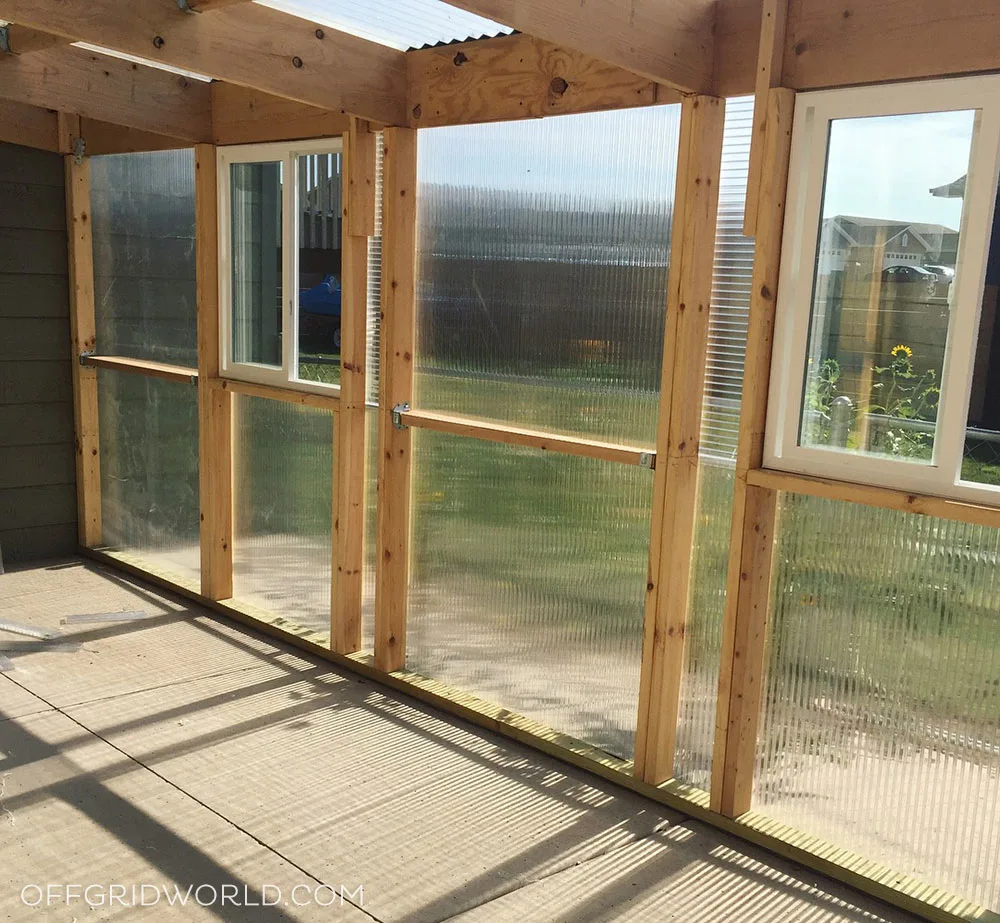
In our case, we only had to construct two full walls because our greenhouse is tucked into a corner against two existing walls where our house meets our garage.
-
Close access to water and electricity
If your greenhouse is attached to your house or another building with water and electricity, you’ll have easy access to these necessities. Otherwise, you’re left stringing long lengths of extension cords and hoses across your yard, or digging underground to install permanent plumbing and wiring to your greenhouse. Unless, of course, you find ways to make your greenhouse off grid.
-
Easy access from the house
Let’s face it. When the wind chill is below zero and snow is blowing so hard you can’t see your hand in front of your face, it’s really nice to enter your greenhouse without getting blasted by Jack Frost. I absolutely love being able to step out into my greenhouse in the morning, barefoot, coffee in hand, no matter what the weather is doing outside.
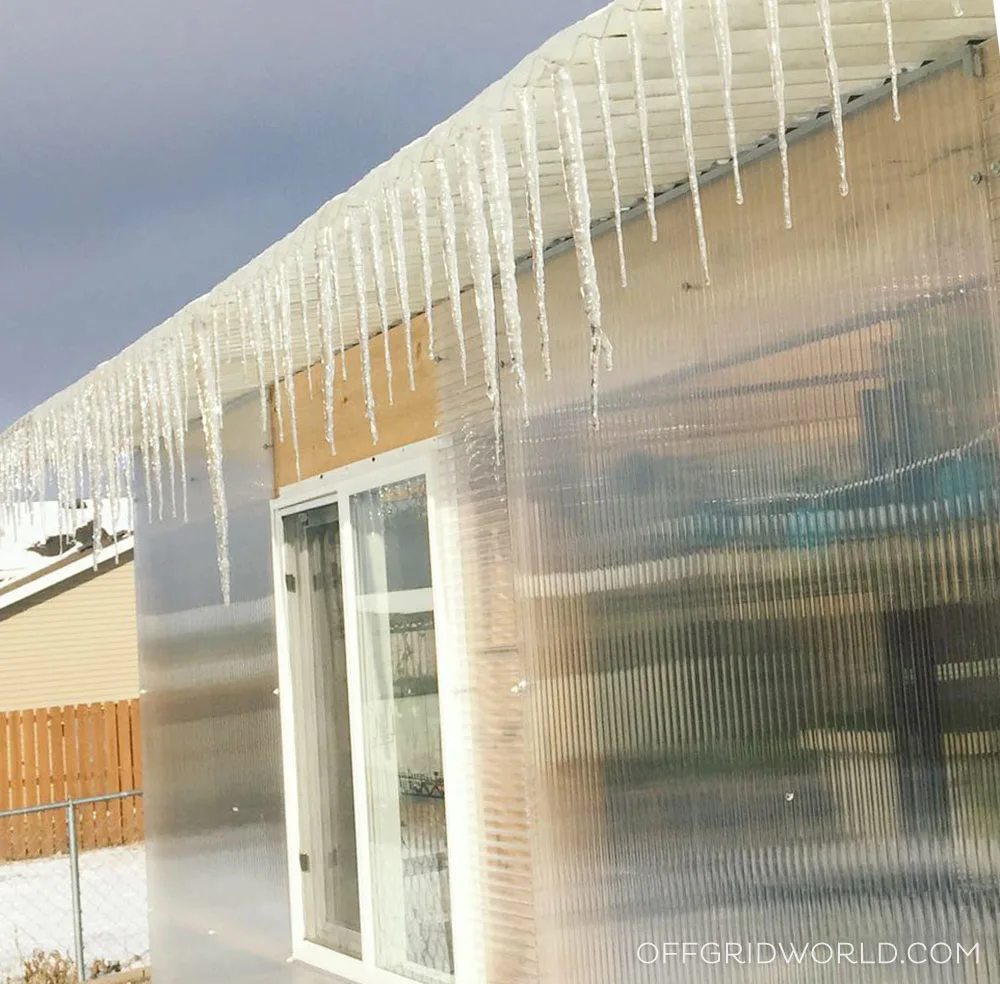
-
Heating advantages
There are two heat-related advantages that come with a greenhouse attached to your house. First, when temperatures are frigid, your greenhouse is likely absorbing some of your home’s heat through the wall, somewhat reducing heating costs if you plan to use your greenhouse year round.
Second, and most exciting – attached greenhouses, if built in a location with optimal light exposure, can be used to passively heat your home in winter. We’ve seen this in many of the earthships we’ve featured, and in this article featuring a small, lean-to greenhouse providing passive heat in a cold climate.
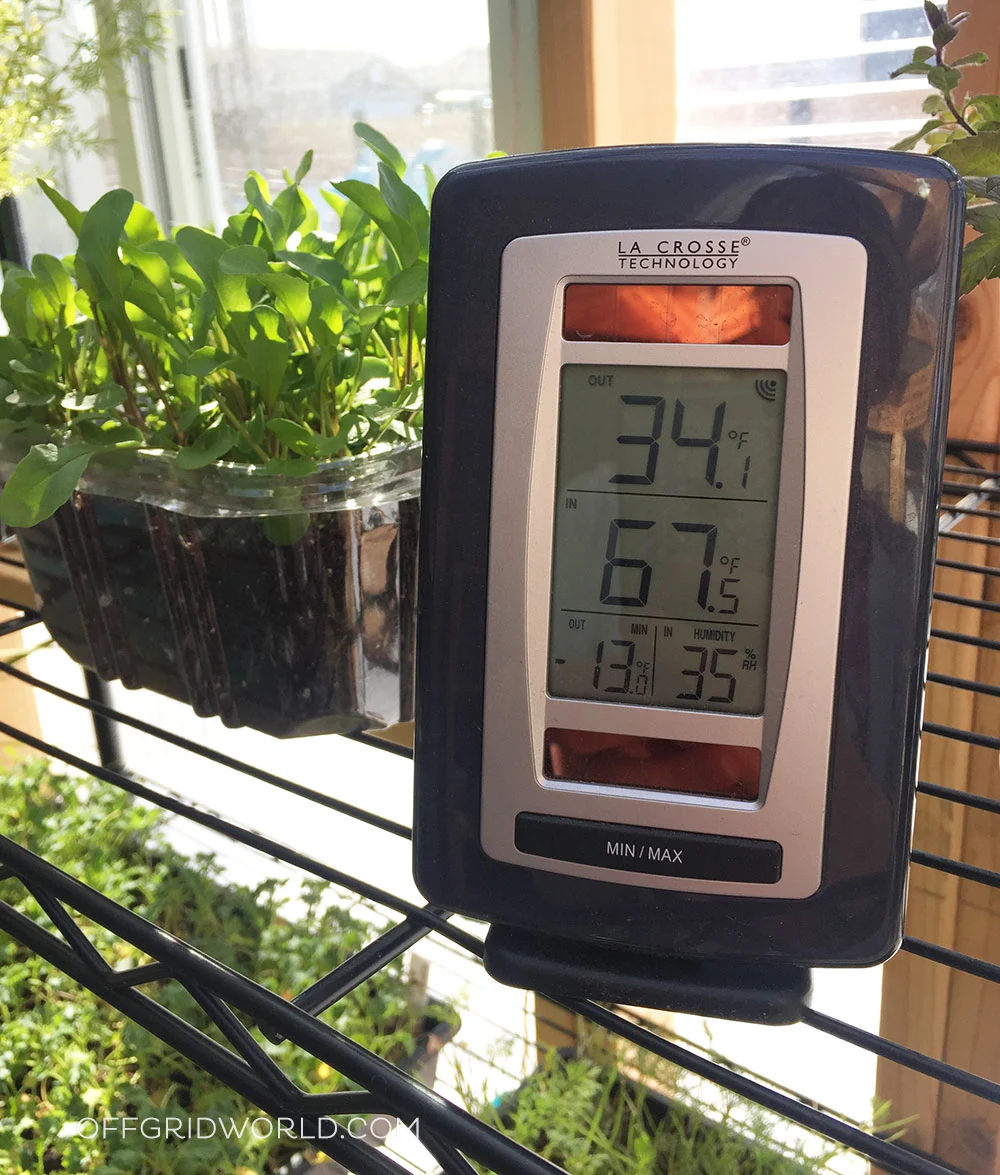
We don’t use my greenhouse for passive heating since it’s attached to our garage, which we do not need to heat. But on sunny winter days it easily gets warm enough to provide some passive heat if it were attached to any living space on our home.
-
Feels like part of the house
An attached greenhouse adds an attractive element to any home. It feels like an extension of the house and can become an additional living space, like a sun room.
My kids love spending time in our greenhouse on summer nights, listening to music and watching stars while protected from mosquitoes. It’s also an amazing place to hang out during rain and snow storms – warm, bright, and peaceful.
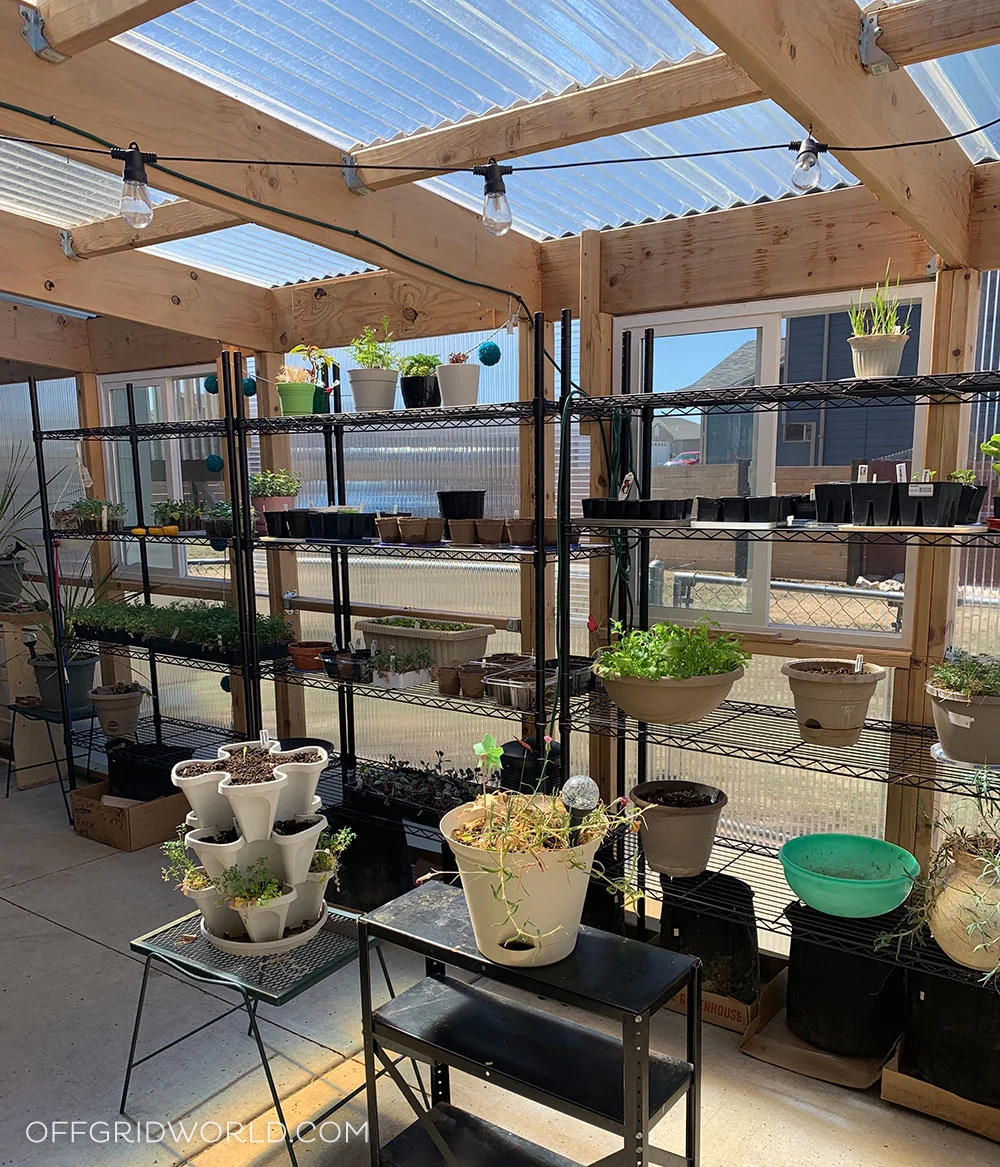
Our DIY greenhouse – the first winter
One big disadvantage I have is that the location where I had to place my greenhouse does not get much morning light. It’s in a corner mostly blocked from sun on the south and east sides. In the summer, this has actually been an advantage, because it stays mostly shady in the morning and doesn’t get unbearably hot as fast as it would if it was on the south side of our house. I can grow plants all summer inside the greenhouse that are prone to garden pests, like brassicas.
This same summer advantage had me worried about going through the first winter, though, since our days are so cold and short. The greenhouse definitely does not get maximum winter sun exposure, meaning I am limited on some of the heating options I might have otherwise tried, like geothermal.
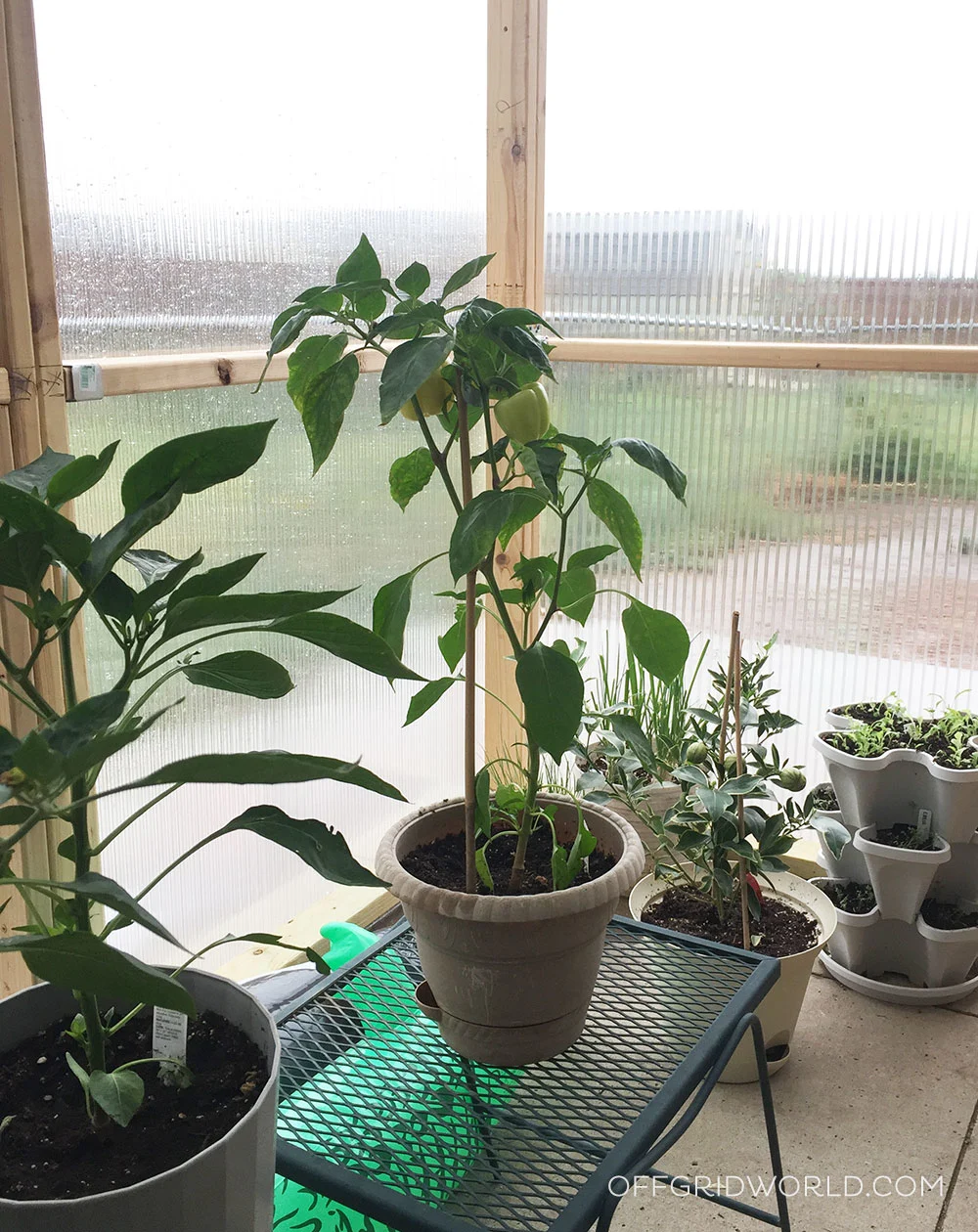 As I mentioned earlier, we were hit with an unusually early freeze last fall that put a quick stop to outdoor growing. While my garden plants were shriveled to frozen remnants, the plants I was able to bring into the greenhouse were fine.
As I mentioned earlier, we were hit with an unusually early freeze last fall that put a quick stop to outdoor growing. While my garden plants were shriveled to frozen remnants, the plants I was able to bring into the greenhouse were fine.
In fact, the heat-loving plants like tomatoes and peppers thrived and produced for several months after everything outside died off. Harvesting fresh, homegrown cherry tomatoes and peppers well into December is pretty impressive for our area!
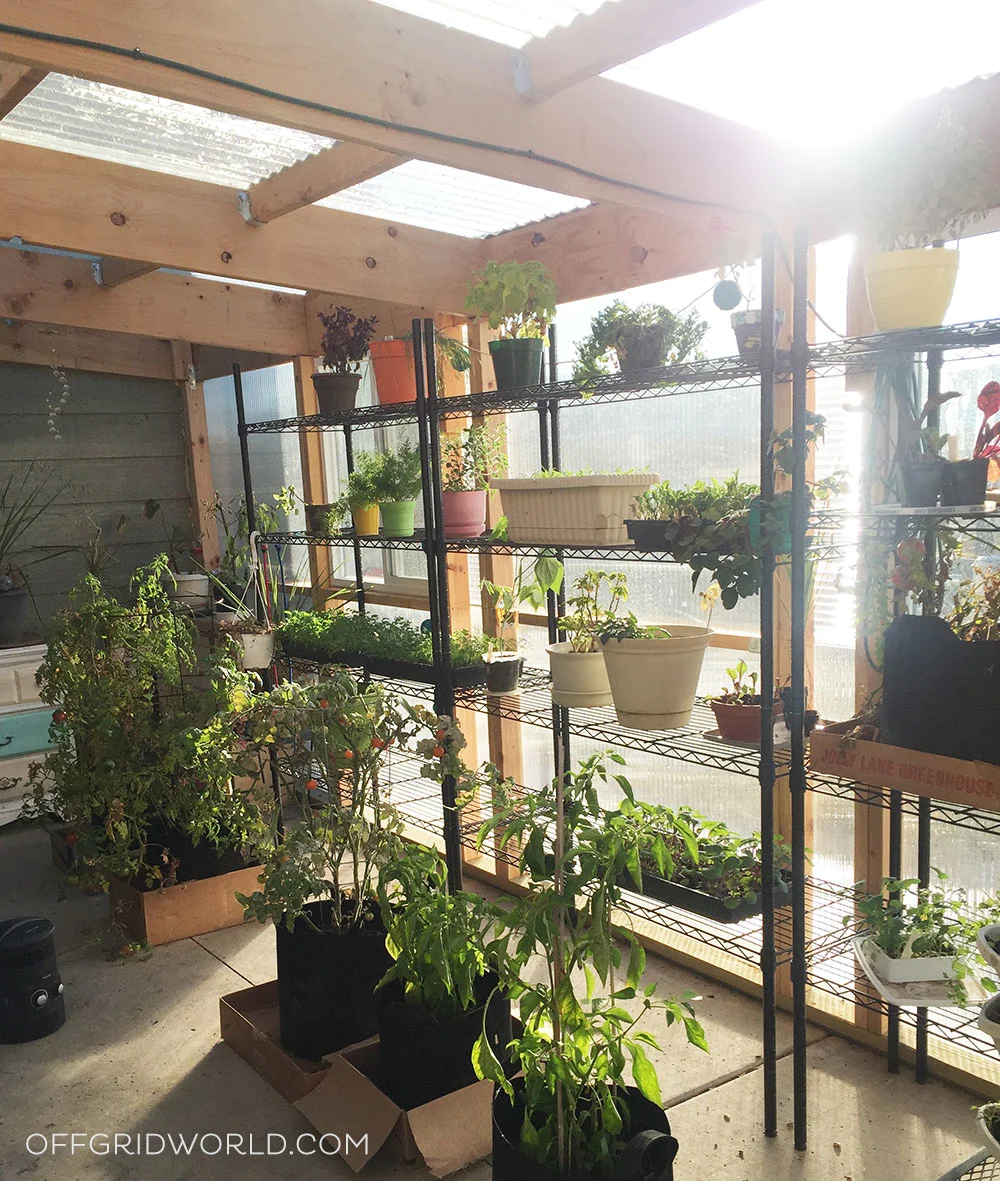
Late November – 2 months after our first frost
February brought us several weeks of record low temperatures – many days below zero with wind chills as low as -50 degrees. Yuck! With some supplemental heat on the coldest nights, I was able to grow cold-hardy baby greens and herbs in the greenhouse all winter long.
Several varieties of baby kale and cabbage, beet greens, cilantro, parsley, dill, and wheat grass not only survived all winter, but continuously produced even when temperatures inside the greenhouse dipped into the 20s. Coming up with an off grid heating solution will be a project for the future so I can grow more variety over winter.
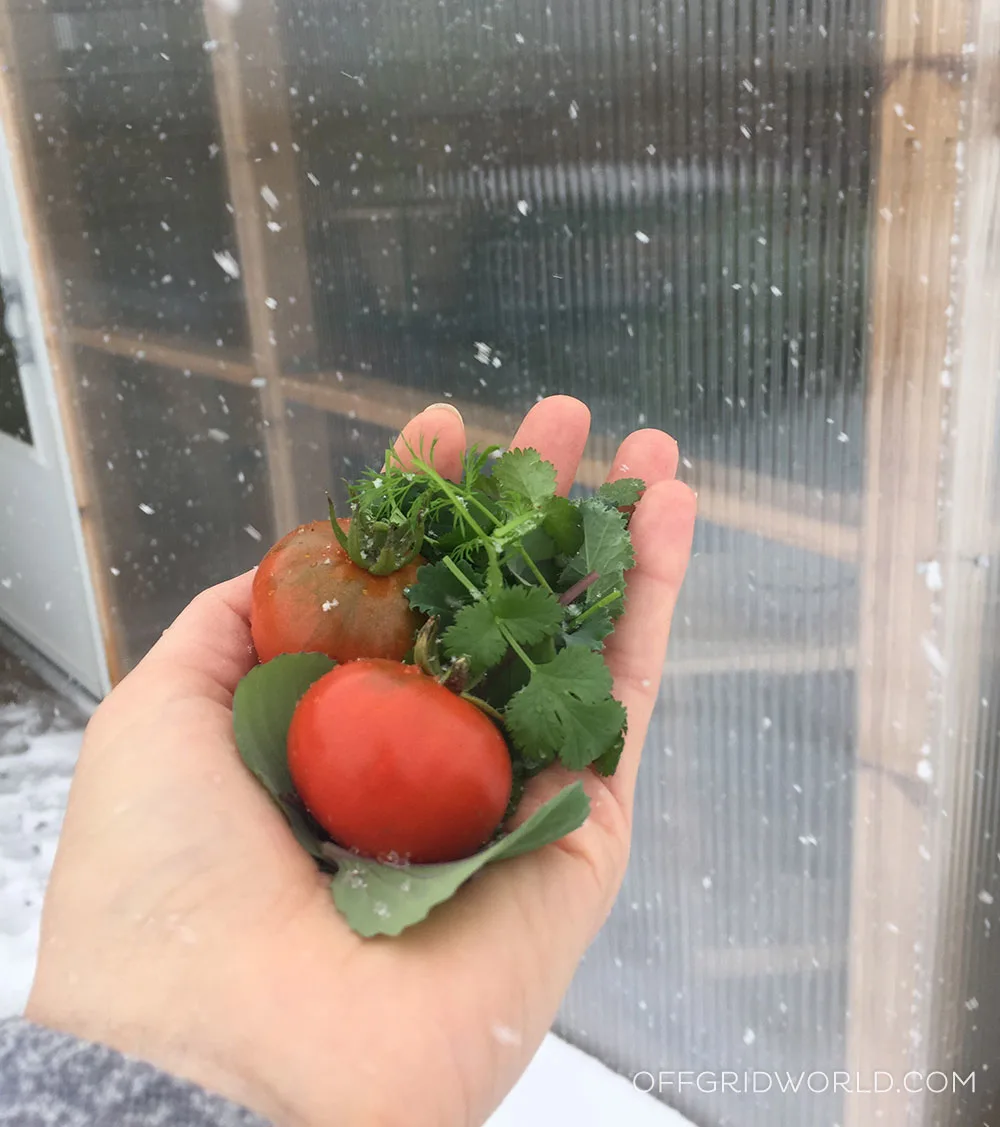
Fresh greenhouse tomatoes and herbs harvested during a December snow storm
Have I convinced you yet to build a greenhouse of your own? I hope so! We live in an area with weather extremes and a very short growing season, yet our DIY greenhouse project has proven invaluable for getting the most out of our garden harvest.
Stay tuned for another article detailing our exact costs and building process. We were able to build ours with high-quality materials for less than you might think.
